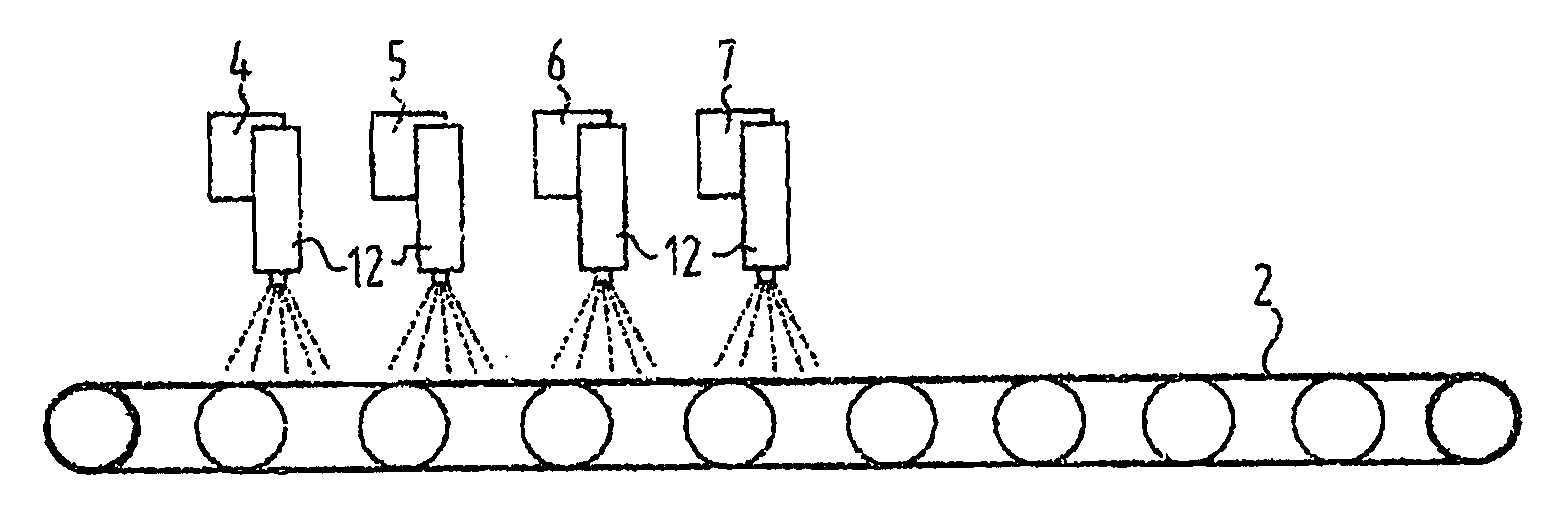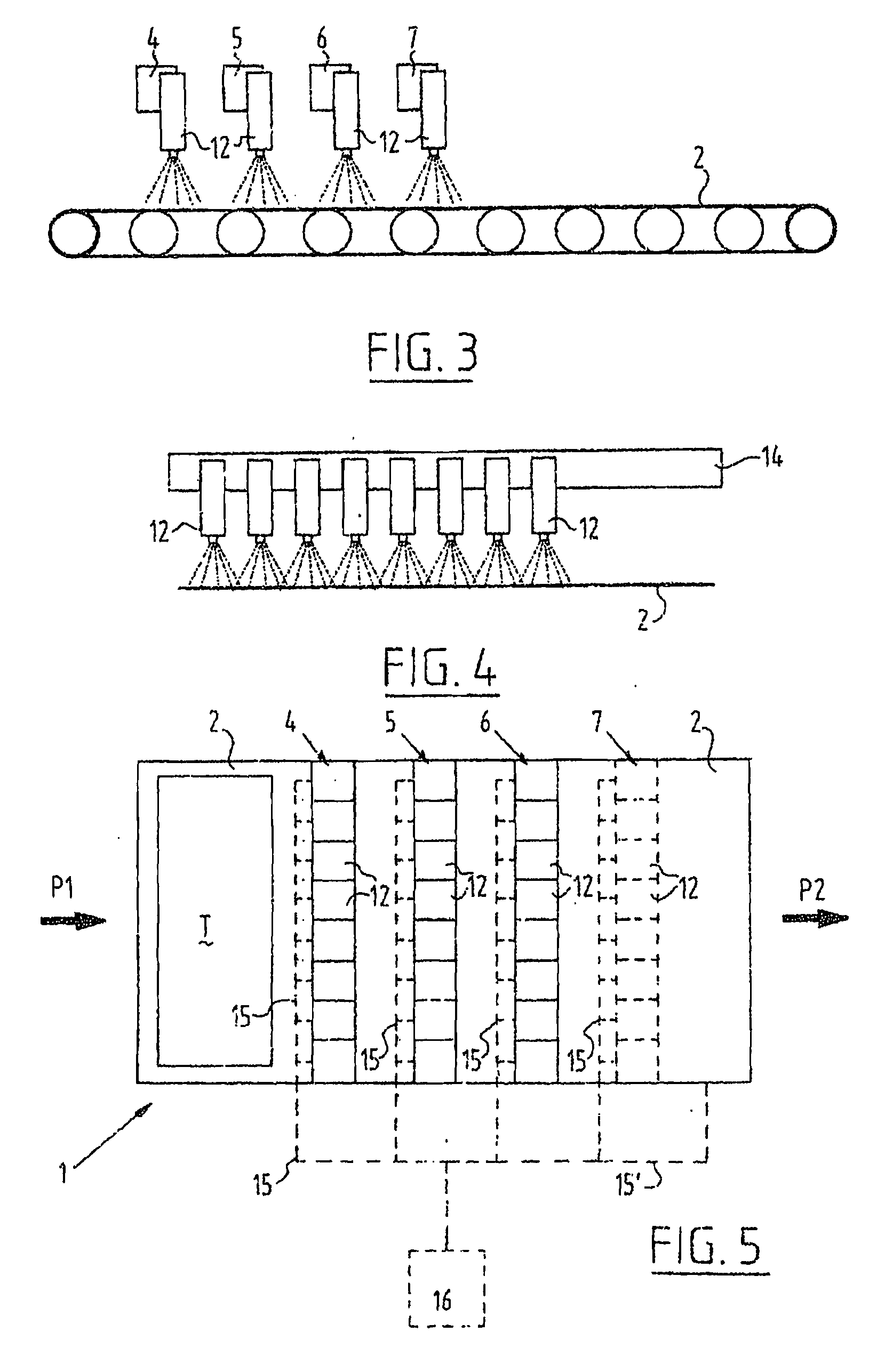Method for Providing a Flame Retardant Finish of a Textile Article
a flame retardant finish and textile technology, applied in the direction of synthetic resin layered products, coatings, weaving, etc., can solve the problems of not being generally free to stretch or distort, and achieve the effect of reducing the formation of smok
- Summary
- Abstract
- Description
- Claims
- Application Information
AI Technical Summary
Benefits of technology
Problems solved by technology
Method used
Image
Examples
example 1
[0072]A formulation “Man 15 b” according to Table 2 was tested in a Linx 6000 CIJ printer using a 62 micron nozzle. It should be noted that although the flame retardant agent Flammentin KRE™ is present at 10 wt %, it is in a 40% aqueous solution. The overall concentration of functional agent is therefore 4 wt %.
TABLE 2Percentage ByFormulation Man 15bFunctionWeight (%)Flammentin KRE (THOR)Active flame10retardantDe-ionised waterMedium64.75Polyethylene Glycol 200Humectant15(Aldrich)PVP K30 (25% in water) (ISP)Viscosity Control1010% Zonyl FSA (Dupont)Surfactant0.15Proxel GXL1 (ISP) / NuoseptBiocide0.14912 (ISP)Respumit S (10% in DI water)Anti foaming agent0.02Projet Fast Cyan 2 (Avecia)Indicator0.25(experimental)Total100.25
[0073]The formulation was found to have the functional properties according to Table 3
TABLE 3PropertiesFiltration1.0 micron, filtered easily (1500 g)AppearanceTransparent pale blue. Low foam.Viscosity at 25° C., cP3.07Surface Tension, dynes / cm28.7Conductivity, mS / cm8.07...
example 2
[0076]The formulation of Table 2 was then revised to significantly increase the concentration of the active flame retardant component according to Table 4. It should be noted that although the flame retardant agent Flammentin KRB™ is present at 70 wt %, it is in a 40% aqueous solution. The overall concentration of functional agent is therefore 28 wt %.
TABLE 4Percentage ByFormulation Man 41fFunctionWeight (%)Deionised waterMedium18.83Respumit S (10% in DI water)Antifoam0.02Polyethylene glycol 200Humectant10.00Nuosept 491 (10% in DI water)Biocide1.00Zonyl FSA (10% in DI water)Surfactant0.15Flammentin KRE (40% solids)Flame Retardant70.00
[0077]The formulation was found to have the functional properties according to Table 5
TABLE 5Man 41f PropertiesViscosity (cP at 25° C.)3.57pH5.27Surface tension (dynes / cm)35.5Filtration (um)6.0Solids (%)28.0Conductivity (mS / cm)25.5
[0078]The above formulation was deposited onto 280 gsm Cotton BD using a Domino JetArray™ inkjet printer. Printing a drop vo...
PUM
| Property | Measurement | Unit |
|---|---|---|
| Temperature | aaaaa | aaaaa |
| Fraction | aaaaa | aaaaa |
| Fraction | aaaaa | aaaaa |
Abstract
Description
Claims
Application Information
 Login to View More
Login to View More - R&D
- Intellectual Property
- Life Sciences
- Materials
- Tech Scout
- Unparalleled Data Quality
- Higher Quality Content
- 60% Fewer Hallucinations
Browse by: Latest US Patents, China's latest patents, Technical Efficacy Thesaurus, Application Domain, Technology Topic, Popular Technical Reports.
© 2025 PatSnap. All rights reserved.Legal|Privacy policy|Modern Slavery Act Transparency Statement|Sitemap|About US| Contact US: help@patsnap.com



